Occupational Safety Training for Operating Road Rollers
99,000 ₫
Note: The above price is calculated per person and may fluctuate depending on the number of participants and market conditions. For more accurate pricing information, please refer to the pricing table or contact our consultants directly.
Occupational safety is a critical issue when operating road rollers and must be addressed promptly to ensure the health and safety of workers, as well as to enhance the reputation of enterprises. The Occupational Safety Training course is one of the most effective solutions to raise awareness on preventing workplace accidents for workers operating road rollers.
Table of Contents
Toggle1. Overview of Rollers Truck
a. What is a Rollers Truck?
A rollers truck (also called a roller, rollers truck) is a specialized vehicle commonly used in construction and roadwork. It is equipped with rolling drums, often heavy-duty, that help compact and level soil or other materials on road surfaces or construction sites.
The main function of a rollers truck is to compact and level layers of soil, stone, or other construction materials to create a uniform foundation for roads, airports, urban areas, or other construction projects. Compaction improves soil strength, reduces elasticity, and prevents soil movement during use.
Rollers trucks are typically used after soil has been distributed and leveled by other machinery such as excavators, bulldozers, or graders. For large construction projects, the use of rollers trucks is a critical part of building and maintaining infrastructure.

b. How Rollers Trucks Work
The operation of a rollers truck relies on rolling drums to generate pressure and compaction force required to densify layers of soil or construction material. Below is a detailed description of how rollers trucks work:
- Roller Drum: The main feature of a rollers truck is one or more rolling drums. These drums can be adjusted to increase or decrease pressure on the soil.
- Pressure and Compaction Force: As the rollers truck moves over the soil, the roller drums generate high pressure mainly from their own weight and the drum mechanism. This pressure is applied to the soil, creating compaction force.
- Compaction and Soil Densification: The applied force helps densify and compact the soil. This process reduces spaces between soil particles, improving mechanical properties and soil stability.
- Pressure Adjustment: If necessary, the operator can adjust the roller drum pressure to meet project-specific requirements using the vehicle’s hydraulic control system.
- Speed Control: Rollers trucks usually allow speed control to ensure even distribution of pressure and compaction across the working surface.
In summary, rollers trucks operate by using roller drums to create pressure and compaction force, helping densify soil layers to prepare for construction or infrastructure maintenance.

c. Industries Using Rollers Trucks
Rollers trucks are mainly used in construction and roadwork. Specific industries include:
- Road Construction: Compaction of soil layers is essential for building and maintaining roads. Rollers trucks create a uniform, dense surface, reducing elasticity and increasing soil strength.
- Infrastructure Construction: In projects like airports, ports, dams, and other public works, rollers trucks prepare the soil surface for subsequent construction stages.
- Urban and Industrial Development: For new urban areas or industrial zones, rollers trucks are used to compact soil and prepare surfaces for building structures.
- Road Maintenance and Land Management: Rollers trucks are also used for road maintenance and soil regulation to ensure stability and resist weather and daily usage effects.
2. Overview of Labor Safety Training for Operating Rollers Trucks
a. What is Labor Safety Training?
- Labor safety training for operating rollers trucks consists of lessons that equip workers with awareness and methods to prevent workplace accidents. Workers directly operating rollers trucks belong to Group 3.
- The safety training course helps workers identify and avoid hazards, reducing the risk of accidents while working.
REGISTER FOR LABOR SAFETY TRAINING SERVICE
b. Training Duration
Initial safety training:
- Total training hours are at least 24 hours, including exam time.
- 8 hours theory on policies and labor safety laws
- 8 hours theory on basic labor safety knowledge
- 4 hours theory on specialized training content
- 2 hours practical training on specialized content
- 2 hours final theory test
The training center will divide the program into multiple sessions depending on workers’ schedules. Typically, there are 6 sessions over 3 days if the company arranges continuous learning time.
Periodic safety training:
- Before the labor safety card expires, workers must attend periodic safety training if they want to renew it, with training hours being at least 50% of the initial safety training duration.
Explanation: Total periodic safety training is at least 12 hours, including exam time. After completing the course and passing the test, workers are reissued or have their labor safety card renewed.
c. Training Content
| No. | TRAINING CONTENT | TRAINING HOURS | |||
| Total | Including | ||||
| Theory | Practical | Exam | |||
| I | Policies and labor safety laws | 8 | 8 | 0 | 0 |
| 1 | Overview of legal documents regarding labor safety and hygiene. | 6 | 6 | ||
| 2 | System of safety standards and technical regulations. | 1 | 1 | ||
| 3 | Specific regulations by state agencies regarding safety, hygiene in new construction, expansion, or renovation of facilities, machinery, equipment, and hazardous substances. | 1 | 1 | ||
| II | Basic knowledge on labor safety | 8 | 8 | 0 | 0 |
| 1 | Basic knowledge of hazards and harmful factors at the workplace. | 4 | 4 | ||
| 2 | Methods for improving working conditions. | 1 | 1 | ||
| 3 | Safety culture in production and business. | 1 | 1 | ||
| 4 | Rights and responsibilities of employers and workers; safety policies; functions of safety networks and safety officers. | 1 | 1 | ||
| 5 | Safety rules, signs, guidance, use of safety equipment and personal protective equipment; accident first aid and occupational disease prevention. | 1 | 1 | ||
| III | Specialized training content | 6 | 4 | 2 | 0 |
| Comprehensive knowledge of machinery, equipment, and hazardous materials; risk assessment and management; safe working procedures with machines and materials. | 6 | 4 | 2 | ||
| IV | Final safety training exam | 2 | 2 | 0 | 0 |
| Total | 24 | 22 | 2 | ||
See more training content of 6 groups
d. Labor Safety Card
After completing the labor safety training and passing the exam, workers will be issued a labor safety card (commonly called Group 3 labor safety certificate).
The Group 3 card includes the worker’s full name, date of birth, job, working environment, training duration, red stamp, and signature confirming course completion.
According to the regulations in Clause 2 of Article 24, Decree 44/2016/ND-CP, there are two cases:
- If the employer and employee have a labor contract, the employer must sign, stamp, and validate the card after the employee completes training and passes the test.
- If the worker is freelance or seasonal and has no labor contract, the training unit must sign, stamp, and validate the card after the worker completes training and passes the test.

3. Hazards When Operating a Roller
Operating a roller can involve many hazards, especially if safety measures are not followed. Here are some common hazards:
- Injuries to Operators and Staff:
- Collisions and Accidents: Rollers often operate in complex construction environments, and collisions with other objects such as motorcycles, pedestrians, or other construction vehicles can lead to serious accidents.
- Workplace Safety:
- Steep Slopes and Inclines: Failing to follow safety rules when operating a roller on sloped terrain can cause tipping or loss of control, endangering the operator and staff.
- Mechanical Issues:
- Equipment Malfunctions: If the roller is not regularly maintained or has technical issues, mechanical failures may occur, making operation hazardous.
- Environmental Conditions:
- Harsh Weather Conditions: Operating a roller in extreme weather such as heavy rain, snow, or unstable ground conditions increases risks and may cause accidents.
- Working Near Other Construction Equipment:
- Collisions with Other Equipment: In construction environments, rollers often work near other machinery. Collisions with them can create dangerous situations.
- Exposure to Toxic Substances:
- Exposure to Hazardous Materials: If the construction site involves toxic substances, the operator and staff may be at risk of poisoning.
- Non-Compliance with Safety Rules:
- Not Wearing Helmets or Protective Gear: Failing to wear proper safety equipment such as helmets increases the risk of head injuries in case of accidents.

4. Measures to Prevent Workplace Accidents When Operating Rollers
To prevent workplace accidents when operating rollers, safety measures must be strictly applied and followed. Here are some key measures:
- Training and Instruction:
- Safety Training: Ensure that roller operators and related staff are fully trained in safe operation. This includes understanding the vehicle’s features, safety rules, and emergency response procedures.
- Regular Inspections and Maintenance:
- Scheduled Maintenance: Perform regular maintenance on rollers to ensure all systems function properly and prevent sudden mechanical failures.
- Use of Safety Equipment:
- Wear Helmets and Personal Protective Equipment: Require all operators and staff to wear helmets and protective gear to prevent head injuries and other hazards.
- Speed Control:
- Maintain Safe Speed: Keep a safe speed, especially on uneven terrain or slopes.
- Monitor Working Environment:
- Check Work Conditions: Monitor conditions including weather, humidity, and terrain to make safe operational decisions.
- Reduce Collision Risks:
- Safe Driving Techniques: Apply safe driving techniques to reduce the risk of collisions with other staff or vehicles on site.
- Periodic Safety System Checks:
- Inspect Safety Systems: Regularly check roller safety systems including brakes, warning lights, alarms, and other devices.
- Stop Work in Dangerous Conditions:
- Cease Work When Necessary: If working conditions become too hazardous, stop work and reassess the situation before continuing.
- Establish Safe Zones:
- Define Safety Areas: Set up and maintain safety zones around rollers to prevent others from entering and reduce collision risks.
- Internal Signaling and Traffic Systems:
- Use Safety Signals and Internal Traffic Control: Ensure rollers are equipped with safety signals and internal traffic systems to warn others in the work area.
- Periodic inspection of rollers to detect early safety issues such as wear, mechanical faults, or defects, thereby reducing workplace accident risks.
5. Benefits of Labor Safety Training
An Toàn Nam Việt provides enterprises with the following benefits after completing labor safety training according to Decree 44/2016/ND-CP on occupational health and safety for companies and enterprises:
- Employees can recognize potential workplace hazards and take preventive measures to avoid accidents.
- Enterprises can establish risk prevention measures in production, operation, and maintenance processes.
- Minimize costs associated with workplace safety risks.
- Continuous production improves labor productivity and product quality.
- Ensure compliance with labor safety regulations, avoiding legal risks.
- Enhance credibility and professionalism, thereby elevating the enterprise’s brand.
Nam Việt’s training programs are a solution to prevent external factors from affecting individuals, helping them avoid hazards that could lead to injuries or even death.
REGISTER FOR LABOR SAFETY TRAINING SERVICES
6. Customer Feedback After Completing Training
An Toàn Nam Việt has many years of experience supporting enterprises in Vietnam in general, and in the southern provinces in particular. This responsibility is extremely valuable to Nam Việt, which is why our Labor Safety Training programs are increasingly professional. The motivation for Nam Việt’s growth comes from both positive feedback and suggestions from our business partners. Below are some testimonials from the partners we have served.
Bắc Nam E&C Construction Investment Joint Stock Company
“My first experience using An Toàn Nam Việt’s services was surprising due to the 24/7 support from the consulting team. Organizing the training class was quick and convenient for our company. Thank you very much for Nam Việt’s service!”
Hoa Đất Construction and Trading Joint Stock Company
“Nam Việt’s service has greatly helped us simplify labor safety procedures and complete safety documentation for our work processes. The consulting team responded promptly to our questions. 5 stars for Nam Việt.”
See more customer interviews after using our services at An Toàn Nam Việt
7. Labor Safety Training Capabilities of An Toàn Nam Việt
An Toàn Nam Việt is a reputable and high-quality labor safety training center in Vietnam. Our training sessions are continuously conducted at production workshops, factories, and construction sites nationwide (all 63 provinces).
REGISTER FOR LABOR SAFETY TRAINING SERVICES
Labor Safety Training License
- An Toàn Nam Việt has been inspected and certified by the Department of Safety under the Ministry of Labor – Invalids and Social Affairs to meet the requirements for conducting labor safety and hygiene training. This further strengthens our capabilities in providing labor safety training.

Training Materials and Lessons
- Before being used in labor safety courses, all training materials are reviewed and approved to ensure accuracy and practical effectiveness.
- Our instructors use teaching methods standardized according to An Toàn Nam Việt, developed by occupational safety experts to maximize knowledge absorption for learners.
Facilities
- Controlling classroom factors that affect training enhances teaching efficiency and learners’ knowledge absorption.
- Our training facilities provide spacious classrooms meeting standards for area, lighting, and training equipment, etc.
8. Nationwide Reputable Labor Safety Training Center
At An Toàn Nam Việt, we prioritize professionalism in labor safety training. For us, teaching workers to protect themselves equips them with safety knowledge essential in their livelihood, contributing to national development.
To ensure effective training, we meticulously prepare every detail, from tools and equipment to curricula, documents, audio, and lighting.
Our labor safety instructors are experts with years of field experience. They also have research projects identifying hazards across industries and methods to prevent them.
Lessons are derived from real-world practice and presented vividly and clearly to workers. These factors help learners feel comfortable and absorb knowledge efficiently. All teachings strictly comply with Decree 44/2016/ND-CP.
Thus, learners gain knowledge of hazard prevention and self-protection, applying it appropriately in real work scenarios.
Our training center proudly provides professional and reputable labor safety training with advantages such as:
- Competitive training costs while maintaining high quality.
- Flexible scheduling aligned with company production needs.
- Quick and lawful certification procedures.
- Instructors with extensive professional experience.
- Controlled classroom conditions to enhance teaching efficiency and learner knowledge absorption.
- Lessons tailored to labor safety requirements of enterprises.
- An Toàn Nam Việt works diligently and professionally to support clients accurately and promptly.

9. Additional Labor Safety Training Resources
- Labor safety materials for roller operation
- Full labor safety training materials
- Labor safety training multiple-choice tests
- Multiple-choice tests for roller operation safety
- Training slides for roller operation safety
1 review for Occupational Safety Training for Operating Road Rollers
No comments yet

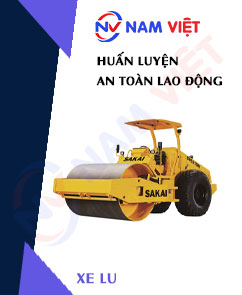





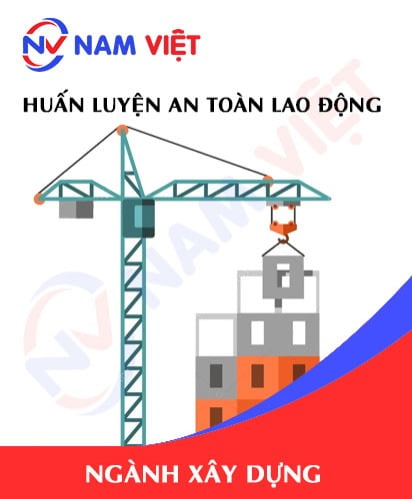
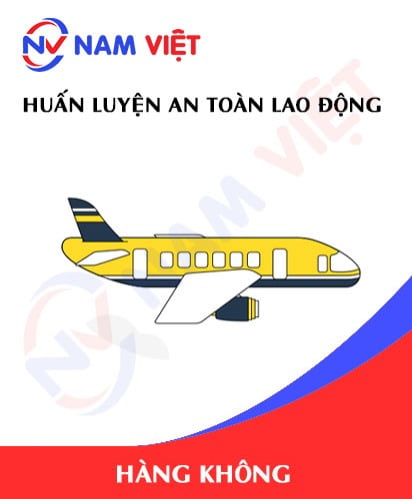
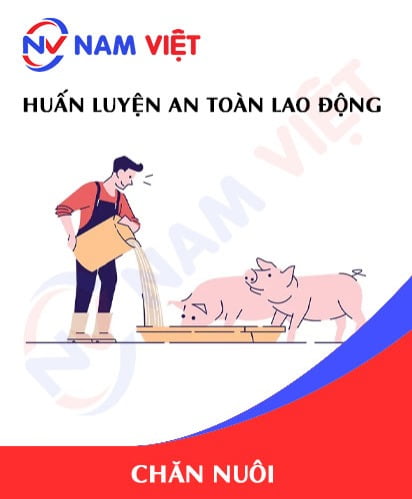


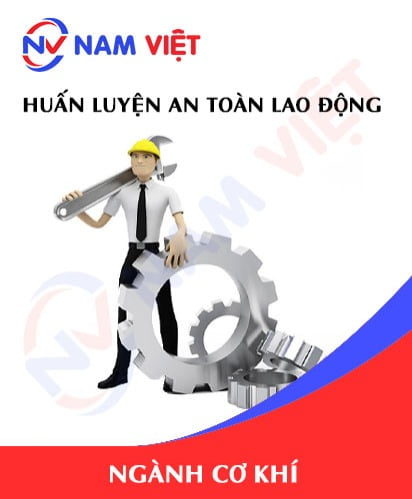

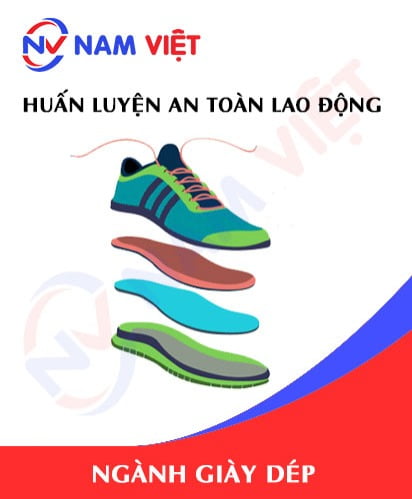
phanminhhang341
Very good safety training service